
When I was five years old, I described my nightmare with a special word: qihei (漆黑; “qi” means “lacquer” and “hei” means “black”). It is a complex word for a child and I was praised by my teacher for using it. In the twenty years that have passed, I never once asked myself why this word is used to describe “black” in Chinese, and what is the lacquer?
I finally came into close contact with lacquer at the age of 28, as a milky white viscous liquid that flows down from the lacquer tree. It smells pungent and can easily cause allergies when it touches the skin. What’s more, after the lacquer contacts the air, it will react with oxygen and the colour of the lacquer will gradually deepen and eventually precipitate as the most Chinese characteristic black.
For thousands of years, the lacquer has been applied as a coating material in all aspects of Chinese people’s life. Its functions include waterproofing, insect prevention, sterilization and anti-corrosion, which not only protects objects but also makes life more beautiful. However, due to the impact of industrial civilisation, lacquer has been universally replaced by chemical paints in modern times, and lacquer culture has gradually become marginal. Today, lacquer is the most familiar stranger to native Chinese people. It is strange because traditional lacquer has lost its application in Chinese people’s contemporary life. It is familiar because it is like blood, flowing in poetry, books, paintings, music, wine, tea and other Chinese culture. Thus, lacquer silently conveys the warm feeling of Chinese history, carrying the gentle texture of Chinese civilisation.
Like me, many Chinese people don’t know what the lacquer is, even though the words “qihei”(漆黑) and “rujiaosiqi”(如胶似漆;means “Sticky like glue and lacquer”) have been embedded in our everyday language. When we glance at the beautiful artifacts left by our ancients in the museum, we still subconsciously say: “This is a lacquerware”, and consider the colour of red and black on the objects as the most traditional Chinese colours. When we touch the surface of the lacquer objects, the gentle texture is familiar; we know it as something other than paint, although we don’t really know the name of the coating material.
The human heart is sensing actively, for the object makes it happen.
This ancient Chinese sentence represents a unique concept of “the sense of object” (物感), engaging the five senses (visual, sound, taste, touch, and smell), which deeply imbues the Chinese people’s spirit. As an example, Chinese lacquerware attaches importance to the beauty of its texture and quality. Lacquering over and over again, the surface becomes more and more radiant, and the colour becomes more and more lustrous. In addition, carving over and over, the ornamentation becomes more and more embonpoint, and the shape becomes thicker.
The lacquer has its specific way to show beauty. As the night pearl may lose its charm in the sunshine and so should be placed in a dark space to give off brilliance, lacquer it is best to view its bright colour under a dark light (moonlight or pearl). This is the perfect combination of “yin”(阴) and “yang” (阳), emphasising the special Chinese concept of “the combination of heaven and man”(天人合一), which primarily concerns the relationship between objects and their surroundings. Therefore, “the sense of object” represented by lacquer actually is a way for Chinese people to understand and grasp the world. It is an aesthetic device derived from ancient civilisations.
In the mechanised modern society, “the sense of an object” (物感) is gradually standardised, homogenised and made superficial. This prompts us to explore and activate the internal meaning and external application of the lacquer more and more. This promises important reference coordinates for the future development of the design and manufacturing industry in China, even the world. This is also an important reason why the Chinese government has vigorously advocated the revival of traditional culture and crafts in recent years. The lacquer practitioners across China have gradually realised this and start making efforts in the promotion of lacquer through different aspects. The ancient city of Jingzhou (荆州) in Hubei Province is also trying to use branding development to explore the creative ways of reviving lacquer craft skill.
Jingzhou, located in the south-central part of Hubei Province and in the middle reaches of the Yangtze River, is a riverside city with a combination of ancient culture and modern civilisation. The history of Jingzhou as a city is more than 3,000 years old. It was the capital city of Chu state (楚国) in the Spring and Autumn Period and the Warring States Period(春秋战国;Eastern Zhou), which has nurtured the influential Chu culture (楚文化) in the history of Chinese civilization.
During the Warring States Period (战国), the territory of the Chu State covered not only the present Hunan Province, Hubei Province, southern Henan Province, southern Shandong Province, but also the majority region of Jiangsu Province, Shanghai, and Jiangxi Province. At its peak, it also included the Hanzhong area (汉中地区) in the southwestern Shaanxi Province. With the expansion of the territory of Chu State, the Chu culture has a wide range of influences. The “Chu” has become the spiritual hometown of more than half of the southerners in China.
Those Chinese people who identify themselves as descendants of the Chu have a common cultural memory. Cultural memory is more than the communication memory which is limited to an individual’s life. It is a kind of long-term memory that can resist the lapse of time and be handed down to generations. The artifact plays an important role in bearing the inheritance of this cultural memory. Lacquerware has a pivotal position in Chu culture, not only in its extensive usage but also in its high artistic value, transmitting the Chu people’s cultural identity across its long history. As a result, Jingzhou Museum preserves various precious lacquer artifacts from the Chu State, which is a precious legacy left by the ancestors and important source of the Chu people’s pride and confidence.
In addition to the material cultural heritage, the unique techniques and values of Chu-style lacquer (楚式漆艺) is an intangible cultural heritage which contains the cultural genes of Chu people. For thousands of years, Chu-style lacquer has been passed down in the Jingzhou area. The lacquerware that was found in the Chu Tomb more than 2,000 years ago is exactly the same as the objects used by locals in the early days of the founding of the People’s Republic of China. However, in recent decades, Chu-style lacquer has gradually declined, until it is now on the verge of loss.
Jingzhou has been striving to explore who to pass on the Chu style lacquer and retain the cultural memory of the Chu people. In 2012, the municipal government established the Jingchu Intangible Cultural Heritage Craftsmanship Institute (荆楚非遗技能传承院) based on the Yangtze River Art Engineering Vocational College (长江艺术工程职业学院), including Chu-style lacquer ware decoration art exhibition hall, production workshop, and import national masters for ICH inheritance and product development. In October 2017, the Ministry of Culture and Tourism set up a Traditional Craft Workstation (传统工艺工作站) in Jingzhou, which is the only ministerial-level traditional craft workstation in the national lacquer industry of Hubei Province. Under the guidance of the Department of Intangible Cultural Heritage of the Ministry of Culture and Tourism (文化和旅游部非物质文化遗产司), the Hubei Provincial Department of Culture and Tourism, and the Jingzhou Municipal Bureau of Culture, Press and Publication, the Academy of Fine Arts of Tsinghua University took charge of creating the workstation and the Yangtze River Art Engineering Vocational College is responsible for daily operations. This is a creative platform that government, universities, enterprises and practitioners of the lacquer industry all cooperate together. The government provides financial and policy support, and scholars from universities offer advice from a professional perspective. As a result, companies or individuals related to the lacquer industry benefit from it, Chu-style lacquer skills can be passed down, and the local economy can develop. At the end of 2018, the professors of the Institute of Fine Arts of Tsinghua University advised that Jingzhou Traditional Craft Workstation should further cultivate a lacquer culture brand (漆文化品牌) under the conditions of market economy so that the Chu-style lacquer art can truly be revitalised and enter the life of contemporary Chinese people through content creation, product development and marketing.
The branding development of Chu-style lacquer craft has just started. After conducting preliminary market research, the experts and scholars of the Academy of Fine Arts of Tsinghua University and the entrepreneurs of the lacquer industry in Jingzhou and Beijing have formulated a strategic plan for the lacquer culture brand. In order to stand out from the fierce market competition, Jingzhou Traditional Craft Workstation first made a series of attempts to improve brand awareness.
Events planning
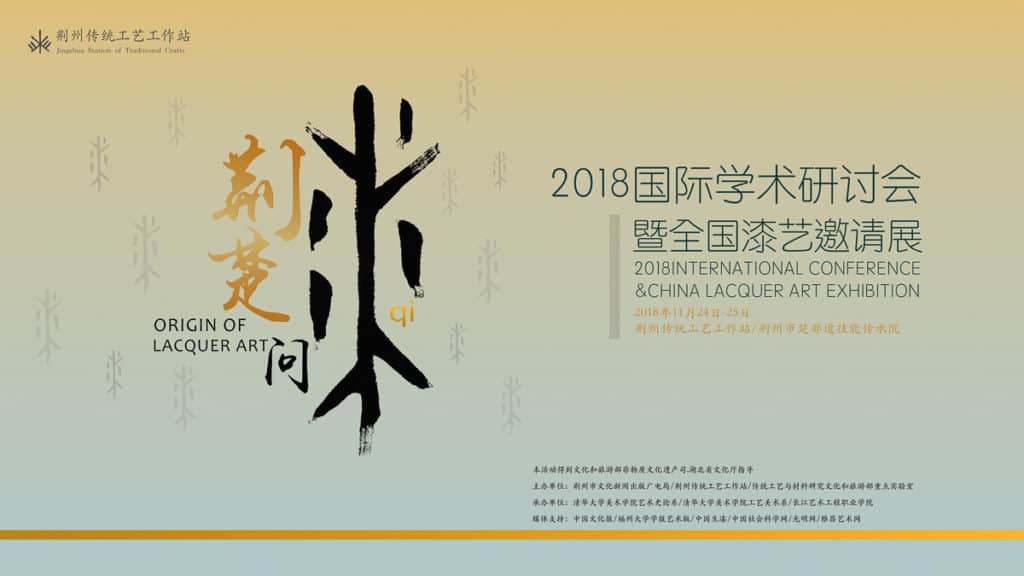
On the morning of 24 November 2018, the International Conference and Chinese Lacquer Art Exhibition opened in Jingzhou Tradition Workstation. This event lasted for one month and was divided into four parts: dialogue, exhibition and signing, including International Conference, National Lacquer Invitation Exhibition, Jingzhou Traditional Craft Workstation Achievement Exhibition, Jingzhou Museum Visit and Exchange, Jingzhou Cultural Relics Protection Center Dialogue, Lacquer Industry Experts Lectures. The International Symposium lasted for two days, consisting of a themed speech, two special topic speaks, and four roundtable forums which composed of lacquer artists, heritage people, materials scientists, cultural experts, art historians, critics, curators, entrepreneurs and other professional backgrounds. Presentations explored “lacquer art creation and cultural exchanges”, “materials and museum research”, “Industry development and process revitalization”, “lacquer art teaching and ICH inheritance”, ‘lacquer tree planting and material application” and other frontier issues of theory and practice from different angles. A total of more than 230 guests participated in this event, which helped disseminate the work Jingzhou Traditional Craft Workstations and Chu lacquer traditions.
Since March 2016, the Ministry of Culture and Tourism has supported enterprises, universities and institutions which have strong design capabilities, and then set up 14 Traditional Craft Workstations. Before the Jingzhou Traditional Craft Workstations, other region’s workstations were developing well in ethnic and regional characteristics traditional craft products, and it is worthwhile for Jingzhou to learn from their experience.
On 27 November 2018, 21 traditional craft practitioners from Hubei Province (including ten employees in the lacquer industry) were selected to go to the Academy of Fine Arts of Tsinghua University to participate in “the 11th Jingzhou Traditional Craft Workstation Workshop” as a part of China ICH Inheritor Development Program (中国非遗传承人群研培计划). They studied art theory and design foundation in design training courses and met experts in different disciplines in China’s most prestigious higher education institutions.
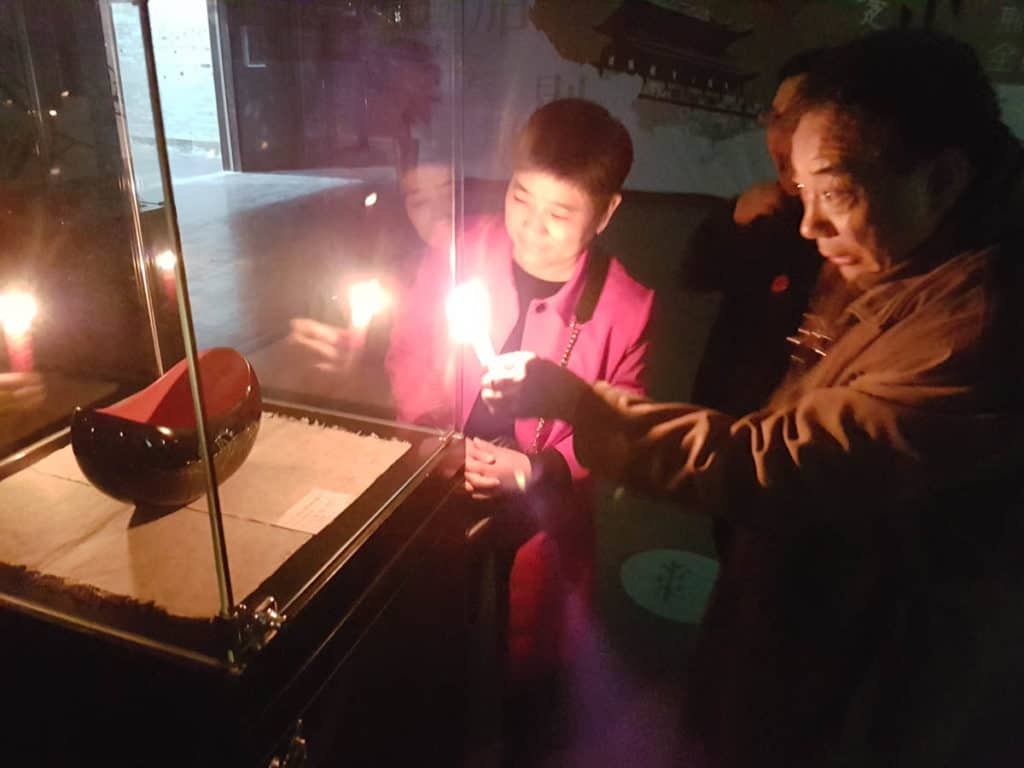
- The Rhinoceros Cloud Apple Bottle
- Ice Cracked Plum Patterns
- Lin Xiao “Zhu Tu Lotus Tea Ware” (left), “Zhu Tu Twenty Tea Beans” (right)
- Cloud carving wave storage box
On 13 December 2018, the “Jingzhou·Hami·Yushu – Traditional Craft Workstation & Cultural and Ecological Protection Zone Construction” seminar was held at the Academy of Fine Arts of Tsinghua University. During the same period, the exhibition of workstations, cultural and ecological protection zones and the exhibition of “ICH enter Tsinghua University” were held, and Jingchu region’s inheritors displayed traditional skills and related products such as Chu-style lacquer, Hubei carved paper-cutting, and Chu embroidery. All of these events were opportunities to learn more about the development patterns of traditional craft practitioners in other regions. This is Jingzhou Traditional Craft Workstation’s first step to “going out” (走出去), as a result, it cultivates its own backbone strength and promotes Chu-style lacquer.
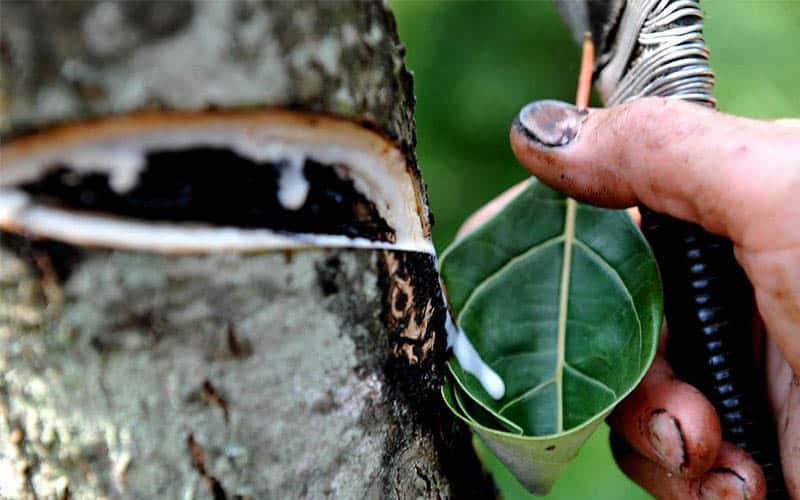
The lacquer tree is widely distributed in China. Sichuan, Shaanxi, Henan, Shanxi, Gansu, Hubei, Guizhou, Yunnan and other provinces are all the main production areas of natural lacquer. Different areas have developed their own unique way to produce lacquer material during the historical changes, however they are all impacted by industrialisation. Therefore, there is a need to unite practitioners from all over the country to resuscitate the lacquer. On 12 May 2019, the “The Lacquer Craftmanship Inheritance Development Alliance Preparation Conference and the Lacquer Invitational Exhibition” (漆艺传承发展联盟筹备大会暨漆艺邀请展) was held at Tsinghua University. In October this year, the Lacquer Craftmanship Inheritance Development Alliance Conference, the National Lacquer Invitational Exhibition, the National Lacquer Skills Competition and “the Belt and Road” (一带一路) Lacquer International Symposium will be held in Jingzhou. This series of events will bring together practitioners from all over the world to jointly promote the sustainable, healthy and high-level development of China’s lacquer industry.
Through a series of events planning, Jingzhou Traditional Craft Workstations have gathered popularity from local and foreign regions, industry and industry fields, promoting the lacquer culture brand that will be born into China and the world.
Master residence
China attaches importance to the revitalisation of traditional crafts and the “artisan spirit” (匠人精神) is one of the most frequently mentioned concepts in recent years. Many national ICH inheritors have become the representative of “artisan spirits” for their superb skills and unremitting study.
From a marketing point of view, these well-known craftspersons are KOL (Key Opinion Leaders) in the traditional crafts field. They not only have more accurate information on the craft industry, but also are accepted and trusted by people who care about traditional crafts, having a great influence on the purchasing behaviour of this group.
The predecessor of Jingzhou Traditional Craft Workstation was the Jingchu ICH Craftsmanship Institute, which has already attached great importance to the import of Jingzhou’s famous local craftspersons and has equipped excellent conditions for every master who resides in the institute. Also, the Yangtze River Art Engineering Vocational College set related majors and invite these well-known craftspersons to inherit skills to the students.
The Jingzhou Traditional Craft Workstation inherited and carried forward this tradition. In addition to inviting more Jingzhou local lacquer masters to take up residence, the workstation expanded the space and further improved infrastructure construction to attract lacquer masters from all over the country. These masters have their own strengths, and they teach in the Yangtze River Art Engineering Vocational College, as well as organise and lead students to carry out product development and production in the studio. Therefore, the workstation is responsible for the promotion and sale of products by the KOL masters. The three parties share the benefits, which is a pioneering and win-win cooperation. The master’s skills are passed down, the students get employment opportunities, the lacquer culture brand of the workstation expands the influence and further helps the masters and students develop further.
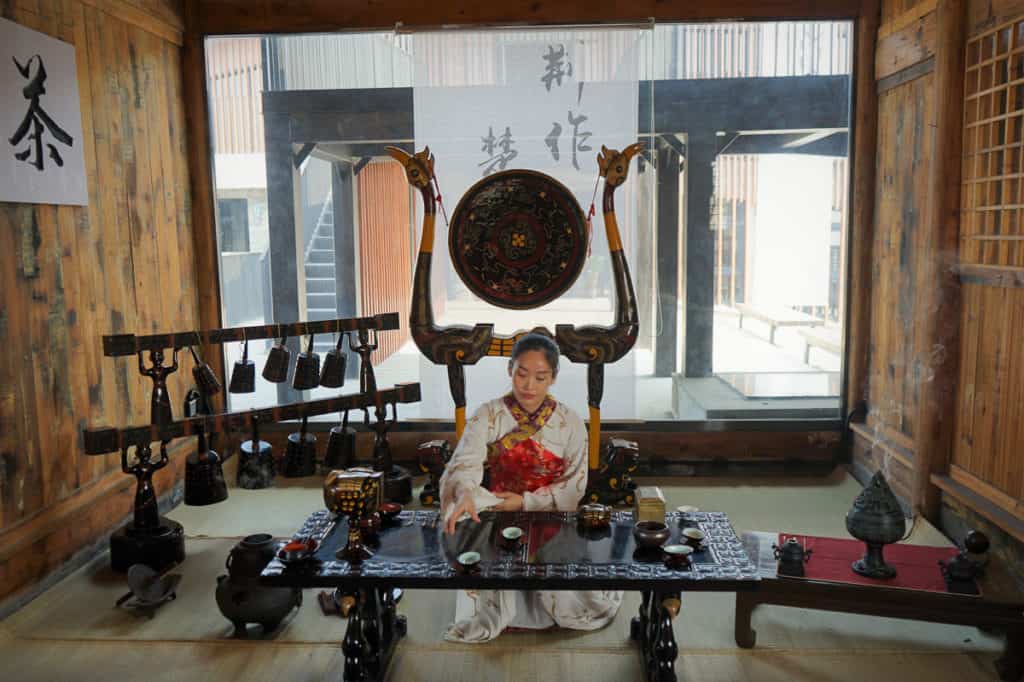
Media innovation
After choosing the right KOL for the lacquer culture brand, it is equally important to determine the appropriate promotional media. Jingzhou Traditional Craft Workstation selected a way of marketing that coordinates with online and offline.
First of all, the workstation opened an official account on the new media that Chinese people read every day, such as WeChat and Weibo, which is responsible for information dissemination and content distribution. Secondly, the workstation launched the planning and construction of the Lacquer Museum and the lacquer culture brand flagship store. The online content dissemination will attract people to physical space offline, and the offline experience will deepen people’s understanding and recognition of the lacquer culture brand.
Regardless of whether it is an online or offline operation, the workstation is mainly aimed at achieving product sales in order to generate economic benefits to ensure self-sufficiency in brand operation and obtain “hematopoietic” functions instead of relying on national and local governments’ blood transfusions to survive.
Unique selling points
Although the concept of lacquer has an unusual rich connotation and extension, it is necessary to dig out the most distinctive and potential selling points in the diverse lacquer culture instead of pursuing all-round characteristics in order to create a unique brand. Thus, the Jingzhou Traditional Craft Station proposed the concept of “lacquer +” (漆+).
As a coating material and adhesive, lacquer always cooperates with various other materials to achieve its unique performance since ancient times. Traditionally, lacquer has been applied to the surface of bamboo, wood, porcelain, cloth, etc. The workstation’s lacquer culture brand will try to combine lacquer with more materials, such as paper, leather, glass, metal, leaves, peel, plastics, and 3D printing resins.
Cultural tourism
In recent years, the Chinese government has vigorously advocated for the integration of culture and tourism. In 2018, the merger of the Ministry of Culture and the Ministry of Tourism into the Ministry of Culture and Tourism is the most representative change. Therefore, in addition to promoting the development of the workstation itself, the lacquer culture brand can also be combined with Jingzhou’s local tourism industry.
Although the millennium ancient city has rich historical and cultural resources, its development of tourism is far behind Hubei Province’s other regions. With the advance of national policies, the Jingzhou Municipal Government has paid more and more attention to the activation of historical culture and cultural creativity to promote tourism industry in the city. In 2018, the Jingzhou Municipal Government launched the planning and construction of “Jingchu Lacquer Town” (荆楚漆艺小镇) with a total construction area of 1,275,100 square meters. It includes tourist reception, lacquer craft demonstration and research, lacquerware exhibition, expert creation and lacquer tree planting and other functions. The development of Lacquer Town requires help from the lacquer culture brand, and the lacquer culture brand will also be promoted through the tourism platform.
Lacquerware has spread into the corners of Chinese ancestors’ life with its unique charm of practicality and artistic value, and it has become the quintessence of Chinese culture, like silk and porcelain. The lacquer craft itself has also been listed as intangible cultural heritage, blending with Chinese history and culture and attracting attention from the world. It not only leaves a memory of civilisation in the fields of music, architecture, literature, religion and painting in China, but also has made important contributions to global civilisation.
In the past few decades, China’s lacquer industry has had ups and downs. Practitioners who have been baptised by the market have realized that only branding can more effectively carry out the inheritance and development of lacquer. Therefore, the Jingzhou Traditional Craft Workstation tries to rescue and protect the Chu-style lacquer through exploring the cultural needs of Chinese consumers, promoting the integration of lacquer into contemporary life, establishing a talent cultivation system centred on the lacquer inheritors, and creating a brand-centred product system. All of them will help lacquer reflect Chinese unique values and aesthetics, and create a new lifestyle that combines tradition and modernity.
Author
 Huan Liu, a mother of a 5-year-old boy, finds her great passion for art and design management after working miserably in the bank for too many years. Now studying at Tsinghua University, she hopes to help build a better world by developing a win-win business model in the handicraft industry.
Huan Liu, a mother of a 5-year-old boy, finds her great passion for art and design management after working miserably in the bank for too many years. Now studying at Tsinghua University, she hopes to help build a better world by developing a win-win business model in the handicraft industry.


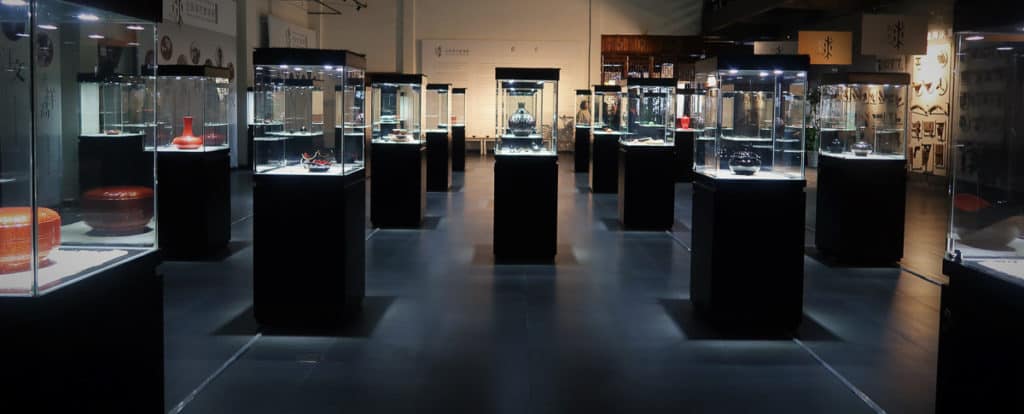
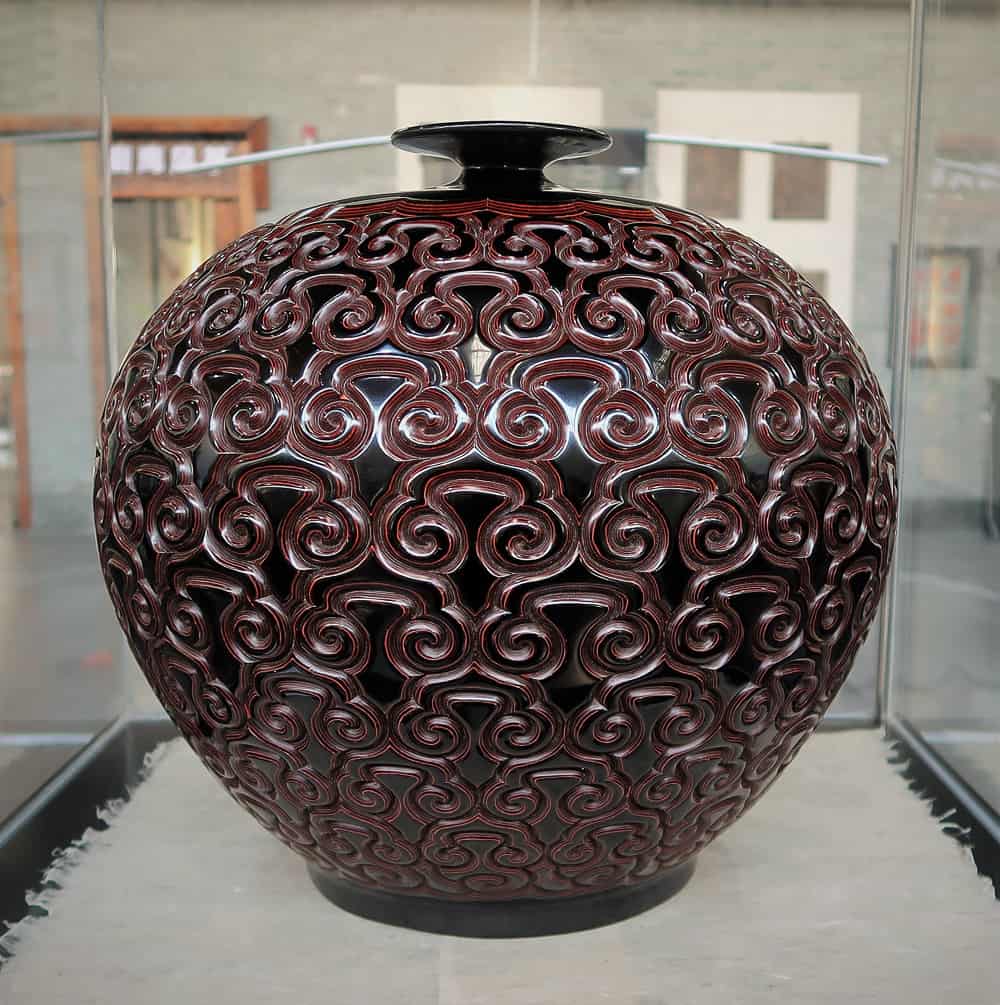
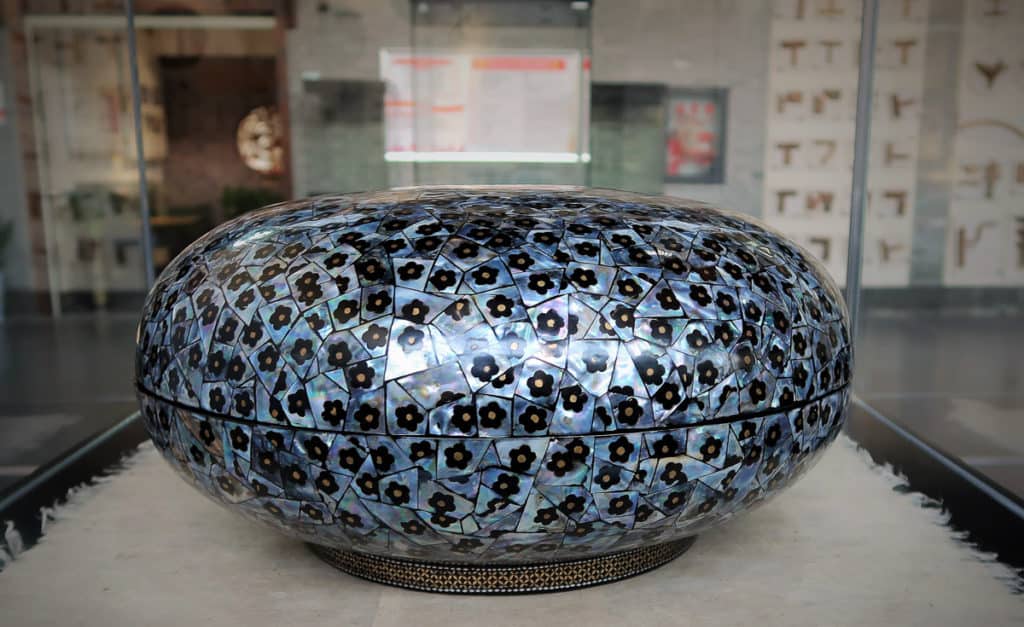
、《朱塗二十一稜茶器》(右)-1024x497.jpg)

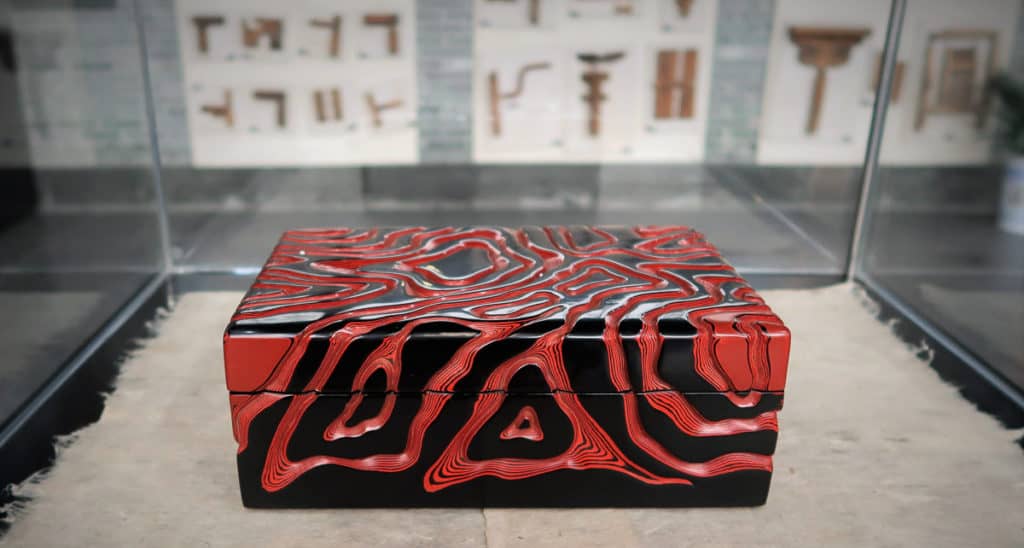

Comments
Great work and a fine job of bring the old arts back to life,after all the new art only last a day while the old arts last forever.
Hi, Thanks for your article. I am researching Chinese lacquerware and found fascinating this concept of “the sense of object” (物感). Would you happen to have more reading to suggest on this matter ?
I’m afraid this is the only discussion about this concept that I have found in English. It certainly deserves more research.